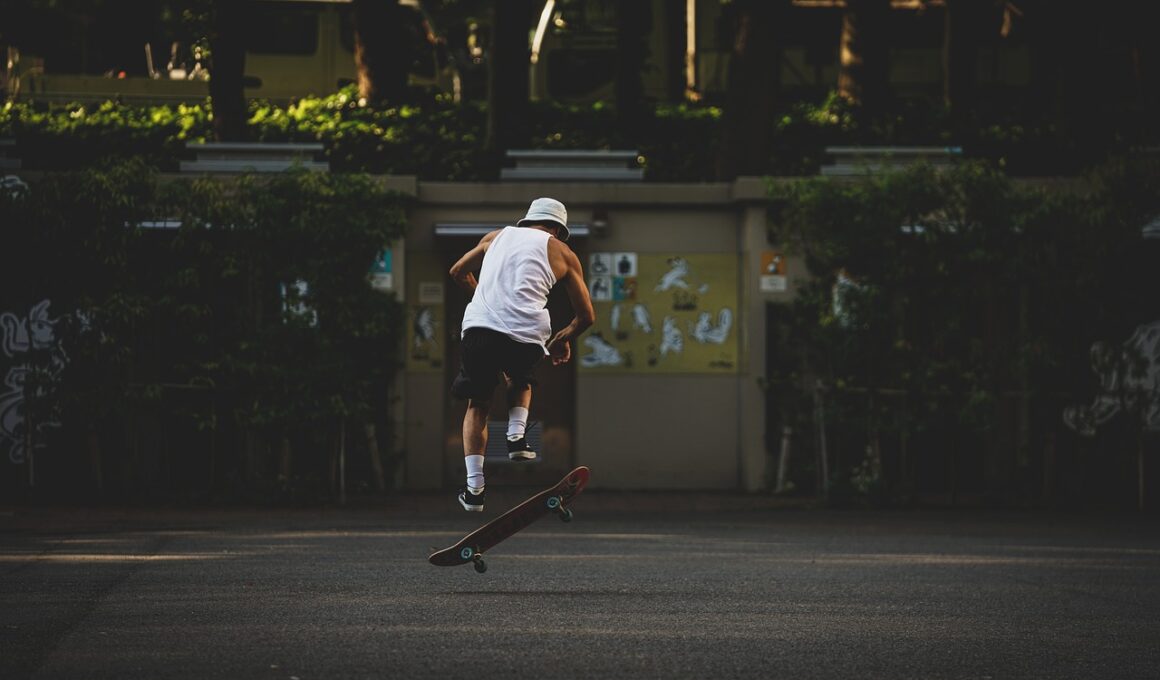The Most Frequent Injuries in Skateboarding and How to Handle Them
Skateboarding is an exhilarating sport that comes with risks, which are evident when considering the frequency and types of injuries associated with it. Common injuries include fractures, sprains, and contusions resulting from falls and impacts. A report shows that fractures are prevalent, especially in wrists and arms due to improper falls. Additional injuries like ankle sprains arise when skateboarders attempt tricks without adequate warm-up or protection gear, leading to weak landing mechanisms. Beginners are particularly at risk of these injuries as they have less experience and control. Another common injury is the concussion, usually occurring from falls that result in head impact. Protective gear is essential for minimizing these injuries, including wearing helmets, pads, and wrist guards. While safety gear significantly reduces injury impacts, education on techniques is equally crucial. Skateboarding can be safe and enjoyable when proper techniques are learned, practiced, and respected. Ultimately, understanding common injuries can help skateboarders take proactive steps towards safer practices, thus allowing them to continue enjoying their passion without compromising their health.
Preventing Skateboarding Injuries
Preventing injuries in skateboarding requires a multi-faceted approach focusing on preparation and protection. First, choosing the right gear is paramount for safety; therefore, skateboarders should invest in high-quality helmets, knee pads, elbow pads, and wrist guards. These protective items can significantly minimize damage when falls occur. Second, understanding the area where an individual skates is vital. Skateboarders should avoid uneven surfaces and crowded spaces, which increase the likelihood of mishaps. Practicing in less congested, flat areas allows beginners to perfect their techniques safely. Furthermore, following a pre-ride routine, such as stretching and warming up, can enhance the body’s ability to sustain impact. Third, learning proper falling techniques is essential. Knowing how to fall correctly can help cushion the blow and minimize the risk of severe injuries. Coaches often recommend techniques where skateboarders roll upon impact rather than landing flat on their limbs. Moreover, progressively challenging oneself prevents sudden demands on the body, thus reducing injury risk. Acquiring a strong foundation in basic skills ensures a smoother transition into more advanced maneuvers in skateboarding.
Common Skateboarding Injuries
The most frequent types of injuries in skateboarding typically stem from falls and miscalculations. Wrist fractures are particularly common, especially among new skaters who may instinctively use their hands to break falls. Notably, educated skateboarding practice entails minimizing the likelihood of landing directly on the wrists. Ankle sprains are also prevalent, resulting from awkward landings or misjudged tricks. Similarly, shoulder injuries can occur, particularly during falls that lead to ground impact side-on. Concussions, while less frequent, present serious headaches and memory disruptions stemming from head impacts, signaling the importance of helmets. Road rash, resulting from sliding along the ground, is another common injury that occurs during falls, emphasizing the necessity of wearing protective clothing. Enabling skateboarders to recognize these prevalent injuries paves the way for improved safety measures and accident prevention strategies. Encouragement exists to advocate for proper safety education, with schools and local skate parks providing vital information on injury recognition and prevention practices. Lastly, appropriate warm-ups and technique drills foster a safer skateboarding environment for all skill levels.
In treating skateboarding injuries, immediate first aid is crucial in minimizing long-term damage. Following any injury, assessment of the condition is necessary to determine what steps should be taken. For minor injuries such as bruises or superficial cuts, ice therapy and over-the-counter pain relief may suffice. Elevating the injured area can also reduce swelling and promote healing. For more serious injuries like fractures, it is vital to immobilize the area and seek medical assistance promptly. Doctors often utilize X-rays to understand the severity of bone injuries, including fractures and dislocations. Physical therapy plays a significant role after initial treatment to rebuild strength and restore movement. Skateboarders following recovery from injuries are encouraged to gradually reintroduce themselves to skating. Additionally, motivation and mental healing are essential, as fear and anxiety can hinder reestablishing confidence during skating. Emphasis should be placed on resuming activities at a comfortable pace, with an open dialogue between the skateboarder and their physical therapists to ensure safety during re-engagement in the sport. A gradual approach coupled with ongoing self-assessment can be the key to making a successful return to skateboarding.
The Role of Education in Injury Prevention
Educational resources play a vital role in understanding skateboarding injuries and fostering safer practices. Local skate parks and community centers often promote workshops focusing on safe skating techniques and injury prevention strategies, aiding in building awareness among young skaters. Schools can implement programs teaching students about the risks associated with skateboarding, equipping them with knowledge to make safer choices. Parents can also be educated on ensuring that their children wear appropriate protective gear, as it significantly reduces injury risks associated with skating. Information on techniques for safe skateboarding is widely available, from online videos to instructional guides. Encouraging collaboration among skateboarders creates an understanding of collective safety, where more experienced skaters can mentor newer participants. Moreover, skateboarding organizations can work towards creating guidelines that advocate for safety norms and standard practices through advocacy. Educating skaters about how to assess their surroundings before practicing can help reduce injuries. Lastly, providing information on common injuries enables skateboarders to quickly recognize symptoms, thereby taking immediate action and preventing further complications.
Another effective strategy for injury prevention is the implementation of a supportive network surrounding young skateboarders. Coaches, trainers, and experienced peers form a mentor system capable of guiding novice skaters through their learning journey while emphasizing the importance of safety. Experienced skaters can share knowledge on how to recognize early signs of overstraining the body and when to rest or seek medical advice. Support networks allow skateboarders to participate in group sessions, which not only foster community but help ensure that safety practices are maintained collectively. Organized skateboarding events often feature professional demonstrations that highlight safe riding practices, enhancing the overall learning experience for beginner riders. These events can also educate on long-term injury prevention strategies and highlight the importance of fitness conditioning. Engaging with healthcare professionals at skateboarding events can also provide skateboarding communities access to invaluable information on injury prevention. When young skaters establish connections with mentors focused on safety, they become more likely to adopt acceptable practices throughout their skateboarding journey. Ultimately, gathering support within the community creates an empowering and protective atmosphere for safe skating.
In conclusion, skateboarding injuries are a significant concern, but proactive measures and community engagement can reduce risks dramatically. Awareness of common injuries and prevention strategies is crucial in promoting safe skateboarding practices. Protective gear, warm-ups, learning techniques, and understanding skateboarding environments all contribute to safer experiences on a skateboard. Injuries do happen, but knowing how to treat them and how to return safely to the sport empowers skateboarders. Consequently, support networks nurture young skaters, providing guidance and mentorship while encouraging safe practices. Moreover, educational resources foster a culture of awareness in skateboarding regarding risks and injury management. By actively promoting knowledge of safety protocols, recognizing injuries early, and developing strong community ties, skateboarders can pursue their passion with reduced risks. In addition, embracing a culture of safety-focused education rewards individuals with a healthier, long-lasting approach to skateboarding. Surrounded by a supportive community, skaters will undoubtedly feel empowered to explore the thrilling world of skateboarding safely, leading to more enjoyable experiences and fewer injuries. Ultimately, sharing resources, knowledge, and support contributes significantly to shaping an injury-free skateboarding culture.
Skateboarding injuries are an expected part of the sport, but effective strategies exist for mitigating these risks consistently, ensuring skaters can continue enjoying what they love safely.


